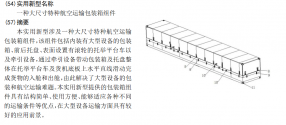No I have never seen an operational 3 stage missile being only 2000kg, therefor I said that I am puzzled by the figure. But very light rocket such as weather rocket can be multiple stages and very light. The author may have made a mistake by missing an zero but what makes you the authority to state that the author actually made such mistake and matches your statement?
This is very cheap tactic to scare others out of a debate. Let me present your competence from 20 years researching of DF21:
You repeatedly used phrases such as "three levels" in post
#81 and "third pole" in post
#107.
1. The proper professional term in English is "stage", in Chinese it is 级. It seems that you are not English speaker and made up a Chinglish term "level" from "级“.
2. I am also curious of how and why you switched to the word "pole". Pole in Chinese is 极 as in South Pole (南极), it means the extreme end, it seems that you are neither a native Chinese speaker therefor mixing the two different words, or you skipped your elementery class in China?
3. You switched between "pole" and "level". People with inadequate language skill will stick to the translation that they believe to be right, they will not switch to other word, unless you rely on machine translation which may use different translation due to faulty judgement of context. I know this because I am surrounded by native and non-native English speakers.
Now seriously, are you claiming to be a memeber of DF21' research team? Or you did home research for 20 years with your abysmal knowledge in professional English and Chinese literacy?
I suggest you stop 脑补, inserting your imagination into the mouth of the researcher.
Either you have not read the document up to this point of time, or as I suspected, you are not native Chinese speaker and can not read but relying on crappy machine translation, otherwise, you wouldn't even ask such questions and started your wild imagination.
Once again, I quote the introduction section of the paper, see the bold texts. Tell me what does it say, or don't bother to reply at all.
因此,本文针对大气层外弹道导弹时间协同需求,开展大气层外固体发动机耗尽关机的弹道飞行时间控制方法研究。首先,针对弹道导弹末级采用无推力终止的固体发动机,考虑推力大小无法调节与被动关机的特点,设计导弹增速方向交替变换规律,实现固体发动机能量管理。然后,推导能量管理对终端状态造成耦合影响的解析式,设计耗尽关机的制导律,对能量管理造成的耦合影响进行了修正补偿,使各导弹发动机关机时刻速度矢量与位置矢量达到满足飞行时间约束与位置约束的零控状态。最后,进行了不同制导算法对比验证以及同地/异地同时/不同时发射情况下的多弹时间协同仿真验证。
All the rest of your argument is based on faulty assumptions and of no value.

